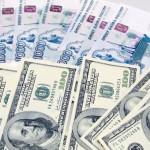Gold advanced on Friday and was poised for a third weekly gain, as few downbeat US reports added to signs of uneven US economic recovery. Assets in the SPDR Gold Trust, the biggest bullion-backed ETF, were unchanged on Thursday, after shrinking by the most in two months.
On the Comex division of the New York Mercantile Exchange, gold futures for settlement in April traded at $1 319.80 per troy ounce by 09:01 GMT, adding 0.22% for the day. Prices touched a session high at $1 322.80 per troy ounce, while day’s low was touched at $1 316.70 an ounce. On February 17, prices touched $1 332.20 per troy ounce, the strongest level since October 31st.
The yellow metal headed for 0.1% advance this week, after last 5-day period it settled 4.1% higher, capping the biggest weekly gain since the period ended August 16. Gold futures are up 8.7% this year after a rout in emerging markets and signs of slowing US growth, boosted demand for haven assets.
However, the precious metal settled last year 28% lower, the steepest annual decline since 1981 as investors lost faith in the metal as a store of value and amid speculation Fed will continue scaling back its monetary stimulus throughout 2014.
“I think $1,330 is pretty much toppish for a while. Theres not much incentive at the moment, except for the dollar movements,” said Yuichi Ikemizu, branch manager for Standard
Bank in Tokyo, cited by Thomson Reuters. “I think (the price) is a little bit too high for Asians to buy gold because weve been below $1,300 for a long time and people bought a lot.” He also predicted bullion to trade in a range of $1,300 and $1,335.
Fed stimulus outlook
Few downbeat US reports spurred speculations that the economy may slow its growth, fueling demand for haven assets, such as gold.
Yesterday, the Philadelphia Fed index, which is a closely watched gauge of US manufacturing activity in the Philadelphia region, came in at -6.3 in February, the weakest level in a year, confounding analysts expectations for a smaller decline to 8.0 from 9.4 in the previous month.
The US Bureau of Labor Statistics reported that the index of consumer prices in the country rose 0.1% in January compared to a month ago, in line with analysts’ estimates and after the index gained 0.2% in December. The annualized consumer price inflation came in at 1.6% last month, matching the median expert’ forecast and after a 1.5% increase in December. Core consumer prices, which exclude the volatile food and fuel categories also advanced 0.1% in January from the preceding month, while the annualized consumer price inflation increased at a 1.6% pace.
“Inflationary pressures are very muted,” said Russell Price, senior economist at Ameriprise Financial Inc. in Detroit, ahead of the report in a Bloomberg News interview. “It’s a positive for consumers’ purchasing power” and “should keep the Fed squarely focused on unemployment and growth.”
However, a report by Markit Economics revealed that its preliminary PMI rose to 56.7 in February, from a final reading of 53.7 in the previous month, capping the largest advance since May 2010, while analysts predicted a decline to 53.0.
A separate report by the US Department of Labor revealed the number of initial jobless claims declined by 3 000 to 336 000 in the week ended February 15th, from a week ago, when 339 000 Americans filed for initial jobless benefits.
At the same time, the minutes of Federal Reserve Bank’s policy meeting on January 28th-29th showed that several policy makers said in “the absence of an appreciable change in the economic outlook, there should be a clear presumption in favor” of continuing to pare back the central bank’s monthly monetary stimulus by 10 billion USD at each meeting.
As the rate of unemployment decreases at a faster than expected pace, even while other labor-market indicators signal weakness, bank’s policy makers agreed that it would “soon be appropriate” to revise their guidance about the time horizon of record-low borrowing costs.
Janet Yellen, in her first testimony to Congress as head of the Fed, said on February 11, the central bank will “likely reduce the pace of asset purchases in further measured steps at future meetings”, but also underscored that the recovery in the labor market in the US is “far from complete”. She also reiterated that the pace of cutting back Fed stimulus was not on a preset course.
The Federal Reserve announced in December that it will pare monthly bond-buying purchases by $10 billion, after which it decided on another reduction of the same size at the meeting on policy in January, underscoring that labor market indicators, which “were mixed but on balance showed further improvement”, while nation’s economic growth has “picked up in recent quarters.”
The central bank will probably continue to pare stimulus by $10 billion at each policy meeting before exiting the program in December, according to a Bloomberg News survey of 41 economists, conducted on January 10th.
Assets in the SPDR Gold Trust, the biggest bullion-backed ETP, were unchanged after being reduced by 0.7% to 795.61 tons on Wednesday, the largest decline since December 23rd. The fund has lost 41% of its holdings in 2013. A total of 553 tons has been withdrawn last year. Billionaire hedge-fund manager John Paulson who holds the biggest stake in the SPDR Gold Trust told clients at the end of last year that he wouldn’t invest more money in his gold fund because it isn’t clear when inflation will accelerate. However, a government report revealed that the owner of the largest stake in the SPDR Gold Trust, kept his holdings unchanged in the fourth quarter of 2013.





